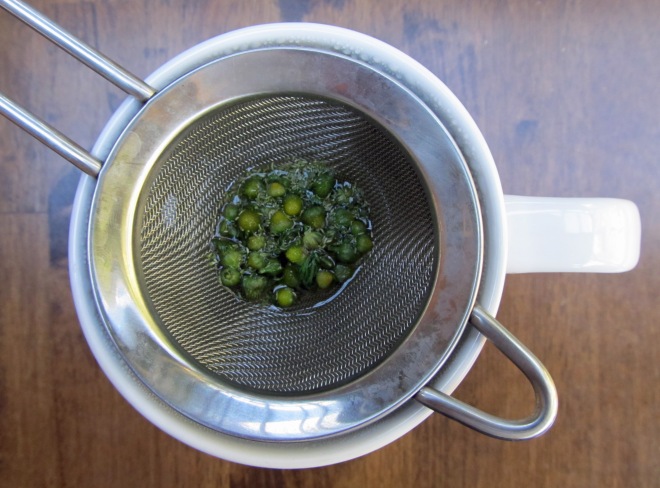When I wrote about pineapple weed (Matricaria discoidea) last year during the Summer of Weeds, I knew that it was edible but I didn’t bother trying it. Pineapple weed is one of my favorite native weeds (yes, it happens to be a native of northwestern North America). I enjoy its sweet fragrance, its frilly leaves, its “petal”-less flowers, and its diminutive size. I also appreciate its tough nature. Now that I have tried pineapple weed tea, I have another thing to add to this list of pros.
One thing about pineapple weed that always impresses me is its ability to grow in the most compacted soils. It actually seems to prefer them. It is consistently found in abundance in highly trafficked areas, like driveways, parking lots, and pathways, seemingly unfazed by regular trampling. Referring to pineapple weed in one of his books about wildflowers, botanist John Hutchinson wrote, “the more it is trodden on the better it seems to thrive.” This is not something you can say about too many other plants.
Both the leaves and flowers of pineapple weed are edible. The flowers seem to be the more common of the two to consume, generally in tea form. In his book Wild Edible and Useful Plants of Idaho, Ray Vizgirdas writes, “A delicious tea can be made from the dried flowers of the plant. The leaves are edible, but bitter. The medicinal uses of pineapple weed are identical to that of chamomile (Anthemis). Used as a tea it is a carminative, antispasmodic, and mild sedative.” In Wild Urban Plants of the Northeast, Peter Del Tredici writes, “A tea made from the leaves has been used in traditional medicine for stomachaches and colds.”
I harvested my pineapple weed at the end of a dirt parking lot and in an adjacent driveway/pathway. I noted how the pineapple weed’s presence waned as I reached the edges of the parking lot and pathway where, presumably, the ground was less compact. Maybe it has more to compete with there – other weeds – and so it shows up less, or maybe its roots simply “prefer” compact soils. Perhaps a little of both. Once I got my harvest home, I rinsed it off and left it to dry. Later, I snipped off the flower heads and made a tea.
I probably used more water than I needed to, so it was a bit diluted, but it was still delicious. It smelled and tasted a lot like chamomile. Sierra agreed. With a little honey added, it was especially nice. Sierra agreed again. The flowers of pineapple weed can be used fresh or dried. They can also be mixed with other ingredients to make a more interesting tea, like the recipe found here.
If you are hesitant to take the leap into eating weeds, a tea may be the simplest thing you can try. Pineapple weed tea is a great way to ease yourself into it. Apart from maybe having to harvest it from strange places, it probably isn’t much different from other teas you have tried, and, from my experience, it’s delightful.





